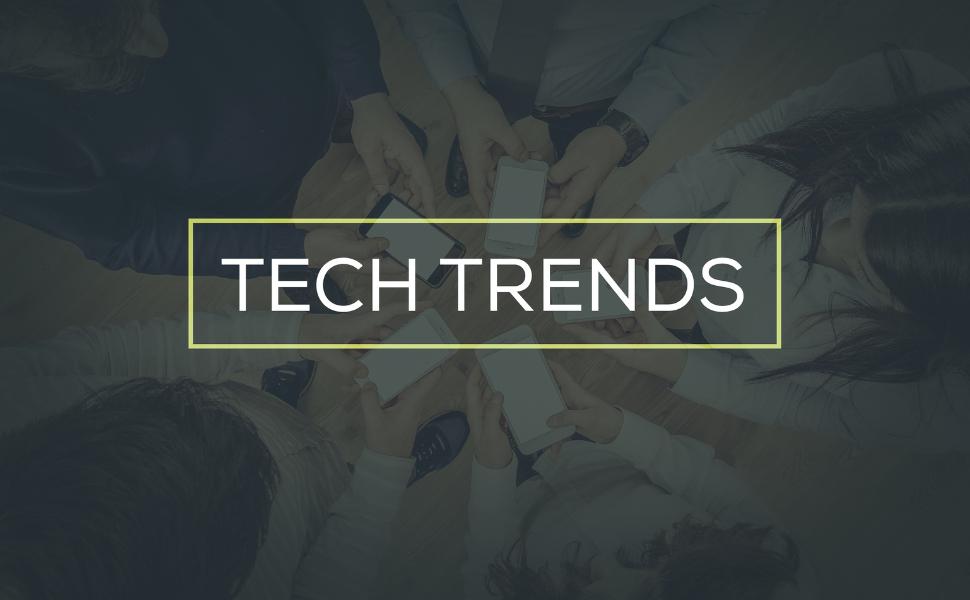
Introduction to tech trends
For Businesses to be competitive, it is essential to distinguish between tech trends and hype. This motivates us to perform our yearly ritual of predicting technological developments for the next solar orbit. Here are our tech predictions for the coming years as the future takes shape with tech trends. The industrial metaverse, 5G wearables, printed electronics, and satellite-to-cell services, among other widely anticipated innovations, won’t materialize in 2023, according to global technology intelligence firm ABI Research. ABI Research analysts identify 41 trends that will shape the technology market in their new whitepaper, 74 Technology Trends That Will-and Won’t-Shape 2023, and 33 others that, despite generating a lot of speculation and commentary, are less likely to have a significant impact over the following year.
Thousands of innovations and discoveries are currently taking place throughout the technology sector. They exist but go largely unnoticed until something happens, like a social movement, a data leak, or a cloud outage. AI and the cloud are no longer uncharted territories. The new tech green space is the digital economy. Cloud data breaches have happened to businesses at least once. It will be just as disruptive to move to net zero as the industrial revolution was.
1. Predictions for tech trends
The aforementioned analyst projections contain a lot to consider. We have combined them with forecasts from other recent forward-looking polls and publications to try to generate a comprehensive picture. It should come as no surprise that satellite, fixed and mobile broadband, and WiFi are at the top of the list considering that they fundamentally sustain the whole digital universe. Similar strong performances for cybersecurity, cloud computing, software development, artificial intelligence (AI), and machine learning (ML) are projected. Along with VR/AR/MR/XR, the metaverse came in second, confirming its status as the most hyped technology of the moment. The inclusion of “Geopolitics & tech supply chains” in sixth place is a reflection of the times.

2. A list of predictions for 2023 – 2024
2.1. Tech Trends #1: ChatGPT and Other Curated Interactions
ChatGPT is one of the most exciting new trends in the tech sector. With its seamless GPT3 technology—the autoregressive language model gives AI “human-like capabilities” to understand and produce text. It has stirred up a commotion in the world of automated chatbots. Deep learning also allows ChatGPT to solve mathematical equations, generate images from text prompts, and provide a variety of writing tasks. From coming up with clever video titles to writing poetry. According to OpenAI, who developed it, the ChatGPT algorithm is trained to respond to follow-up queries, comprehend errors based on user feedback, and refute false presumptions.
2.2. Tech Trends #2: The metaverse of marketing
According to a 2021 Bloomberg research, the metaverse business is expected to grow to an astounding $800 billion by 2024. A 3D virtual simulation called the metaverse allows users to communicate with one another across many devices. Advertisers will grasp the limitless marketing opportunities of this immersive experience during the reign of Internet 3.0, making it the hub of brand awareness and engagement. With various AI and Virtual Reality (VR) enabled experiences, brands like Nike are already tracking consumer preferences and shopping habits. Others are also looking to improve user experience by using QR codes to link their physical stores to the metaverse.
2.2.1. Certain Aspects of the Metaverse Will Be Real
The phrase “metaverse,” has come to stand in for a more immersive internet in which we will be able to work, play, and interact with one another on a constant platform. According to experts, the metaverse will contribute $5 trillion to the world economy by 2030, and 2023 will be the year that determines the metaverse’s course for the following ten years. The fields of augmented reality (AR) and virtual reality (VR) will develop further. The metaverse workplace is one to keep an eye on; in 2023, I think that we’ll have more immersive meeting spaces where we can collaborate, brainstorm, and create together.
2.3. Tech Trends #3: Digital Immune Systems
This system alludes to an architecture made up of techniques taken from the fields of software, automation, development, and analytics. By eliminating flaws, threats, and system weaknesses, it aims to reduce business risks and improve customer satisfaction. The significance of DIS lies in automating the various components of a software system to successfully thwart virtual threats of every description. According to Gartner, businesses that have already implemented DIS will reduce customer downtime by around 80% by 2025.
2.3.1. Rise of Edge and Quantum Computing
In contrast to a centralised server environment, edge computing is a programming paradigm that captures saves and processes data at the data source. This decentralised process enables the machine to analyse raw data in real-time and brings insights closer to the actual point of interaction. From smartwatches to computers that monitor intersectional traffic flow, edge computing is utilised everywhere. However, it may see a radical deployment across the data analytics sector in 2023’s tech trends.
Any country that develops quantum computing at scale has the potential to render our existing encryption practices worthless, making it possible for them to decrypt the encryption used by other countries, enterprises, security systems, and other entities. As nations like the US, UK, China, and Russia invest heavily in the development of quantum computing technology, this is a development to keep an eye on in 2023.
2.4. Tech Trends #4: Genomics
Genomic research has improved our understanding of life and contemporary health analytics while also advancing our understanding of neural networks. In the upcoming years, fast-developing technologies such as scarless genome editing, pathogen intelligence, and NGS data analysis platforms will use AI to interpret hidden genetic codes and patterns. Elevating genomic data analysis and metagenomics to the top positions in the biotech sector. Functional genomics, which uses epigenome editing to reveal the influence of intergenic areas on biological processes, will become more prevalent in 2023 tech trends.
2.5. Tech Trends #5: Internet of Things (IoT)
The term “Internet of Things” (IoT) describes a developing network of interconnected objects that may exchange data via the internet and with one another. This covers anything from wearable fitness trackers and security cameras to smart thermostats and home appliances. By 2030, 30 billion of these loT gadgets are expected to be in use globally, resulting in a massive network of networked items that range from cell phones to kitchen appliances.
As the number of connected devices increases. The Internet of Things (loT) is anticipated to have a stronger impact on our lives. The ability to automate and optimise numerous routine chores is one of the IoT’s most important potential advantages. A smart thermostat, for instance, can learn your routine and modify the temperature of your house accordingly. Based on the local weather patterns, a smart irrigation system can modify the quantity of water it utilises.

In addition to enhancing connection, next-generation wireless will support process optimization for greater dependability, reduced costs, fewer risks, and greater productivity. The shift to digital transformation will go more smoothly if several wireless technologies are combined into one infrastructure and used. Future wireless will require less financing if its technical underpinning is more open, unified, secure, dependable, and scalable. The Internet of Things (IoT) trend will find it simpler to gather environmental data thanks to the new wireless technology with tech trends. Applications in radar sensing, satellite technology, energy harvesting, and other fields are likely to emerge.
Conclusion
As consumers demand energy-efficient goods and services supported by more sustainable technologies, efforts to boost supply chain transparency will probably continue in 2023.
Unavoidably, technology will continue to advance more quickly. You must become an expert in new technologies, develop the ability to deal with continual change, and use this as a competitive advantage if you want to succeed in your tech job.




